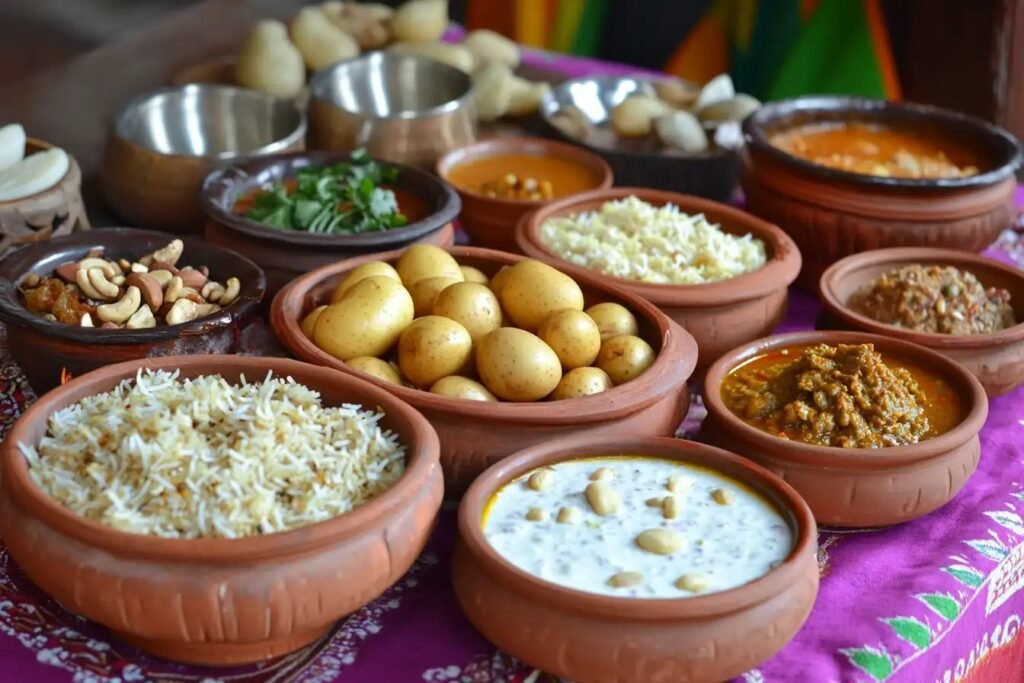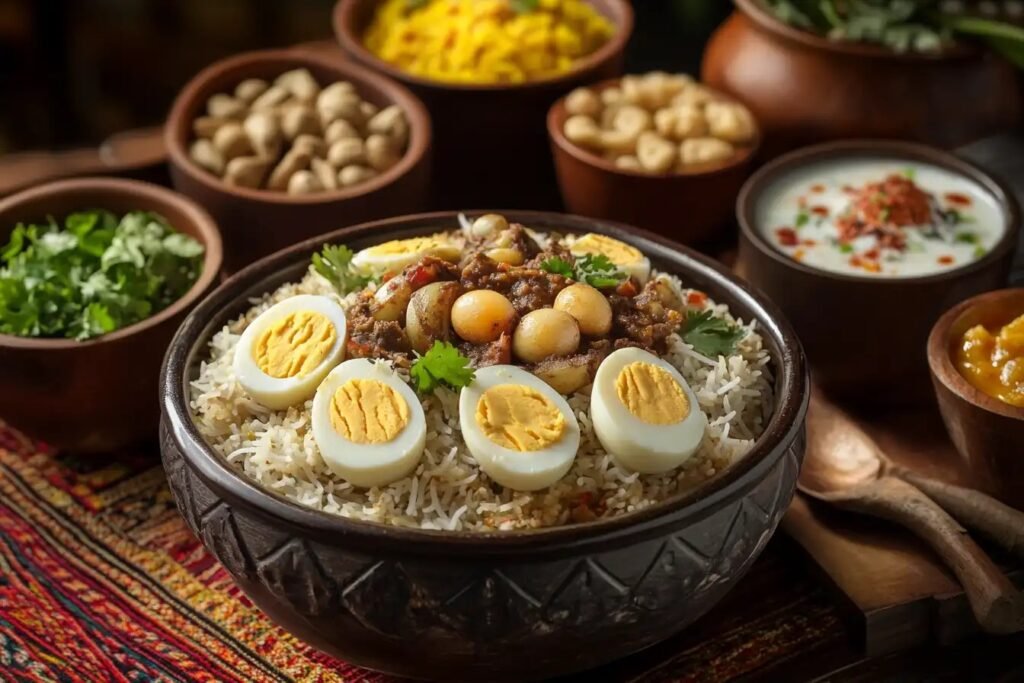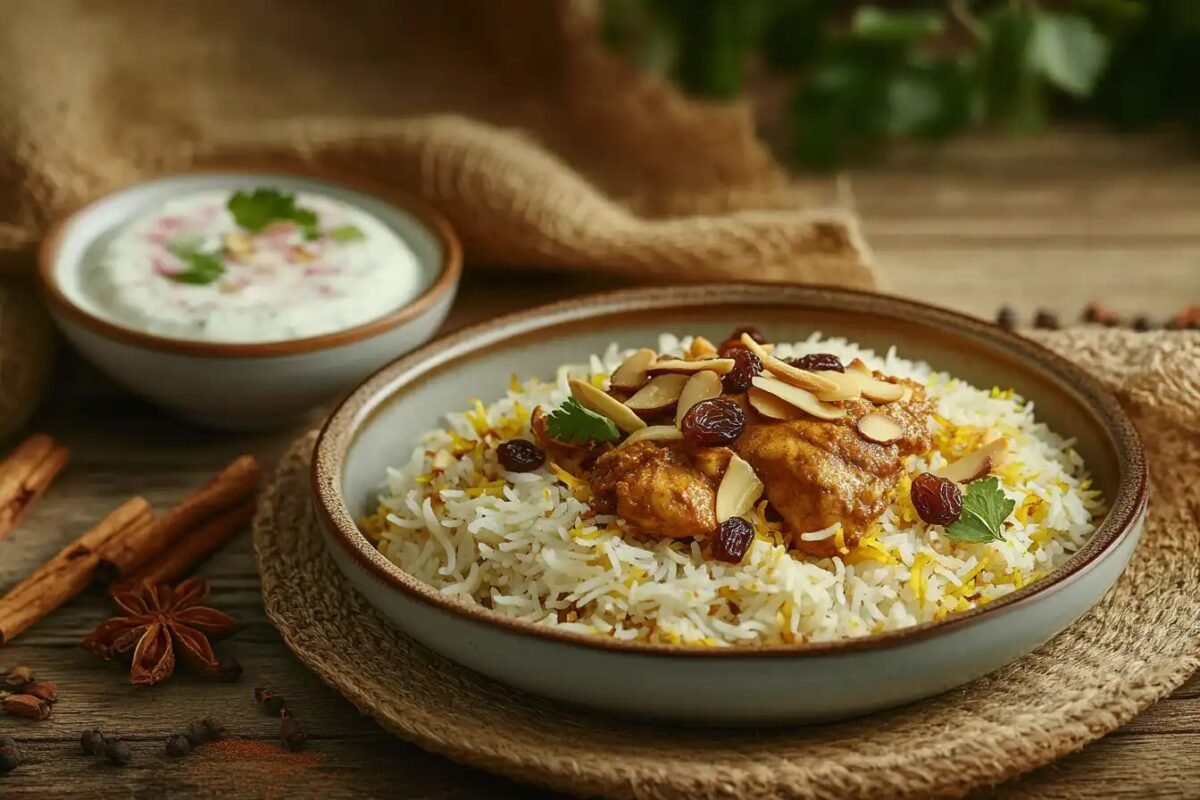Introduction
Biryani, a dish that tantalizes taste buds and ignites debates, is a beloved culinary masterpiece cherished worldwide. From its fragrant rice to its tantalizing blend of spices, biryani is much more than a meal it’s a celebration of flavors. Yet, the question remains: What is the secret ingredient for biryani? This article dives deep into the essence of biryani, unraveling its complexities, uncovering the elusive “secret ingredient,” and exploring the methods and traditions that make it so special.
Introduction to Biryani and Its Unique Taste
The History and Significance of Biryani
Biryani’s origins trace back centuries, steeped in rich history and cultural fusion. It’s said to have evolved from Persian “pilaf” and adapted uniquely as it traveled through South Asia. This dish isn’t just food; it’s a narrative of trade, migration, and tradition. Every region added its spin whether it’s the aromatic Hyderabadi biryani or the subtle yet flavorful Lucknowi biryani making it a global favorite.
Why Biryani is Loved Across the World
What makes biryani irresistible? It’s the harmony of aromatic spices, perfectly cooked long-grain rice, and tender meat, all layered to create a symphony of flavors. Each spoonful is a medley of textures and aromas that linger long after the meal ends. The dish’s adaptability vegetarian, chicken, mutton, seafood—ensures there’s a biryani for everyone.
The Quest for the ‘Secret Ingredient’ in Biryani
While biryani is celebrated for its rich flavor, the hunt for the secret ingredient keeps food lovers guessing. Is it the saffron? The ghee? Or perhaps a precise blend of spices passed down through generations? The intrigue lies in how one subtle element can elevate the entire dish, making each biryani recipe distinct yet universally cherished.
Print
Secret Ingredient for Biryani: The Flavorful Truth You Didn’t Expect
Aromatic and rich, this traditional biryani recipe blends basmati rice with tender marinated meat, layered with saffron, fried onions, and the essential ‘secret’ ingredient—ghee—for a flavorful masterpiece.
- Total Time: 1 hour
- Yield: 4 servings 1x
Ingredients
2 cups long-grain basmati rice
1 lb chicken or mutton, cleaned
1 cup yogurt
1 large onion, thinly sliced
2 tbsp ghee (clarified butter)
1/4 tsp saffron threads soaked in 2 tbsp warm milk
1 tsp garam masala
1 tbsp ginger-garlic paste
2 tsp biryani masala
Fresh mint and coriander leaves
Salt to taste
Instructions
1. Wash and soak basmati rice for 30 minutes.
2. Marinate meat in yogurt, spices, and ginger-garlic paste for at least 1 hour.
3. Fry onions in ghee until golden brown, set aside half for layering.
4. Partially cook soaked rice in boiling water with salt, drain and set aside.
5. Layer rice and marinated meat in a pot, sprinkle fried onions, mint, coriander, ghee, and saffron milk between layers.
6. Seal the pot and cook on low heat (dum method) for 30–40 minutes.
7. Let rest for 10 minutes, then gently fluff and serve hot.
Notes
You can substitute chicken with vegetables or tofu for a vegetarian version. Always use high-quality basmati rice for the best texture and aroma.
- Prep Time: 20 mins
- Cook Time: 40 mins
- Category: Main Course
- Method: Dum Cooking
- Cuisine: Indian
Nutrition
- Serving Size: 1 plate
- Calories: 450
- Sugar: 3g
- Sodium: 620mg
- Fat: 20g
- Saturated Fat: 8g
- Unsaturated Fat: 10g
- Trans Fat: 0g
- Carbohydrates: 50g
- Fiber: 3g
- Protein: 25g
- Cholesterol: 70mg
What Makes Biryani Special?
The Complexity of Flavors in Biryani
Biryani is a unique dish because it’s not just about one dominant flavor it’s a delightful balance of aromatics, spices, and textures. The rice provides a neutral base, while the meat or vegetables contribute depth. Add to that, spices like cardamom, cloves, and cinnamon infuse their magic. Every bite feels like an explosion of taste, with each component complementing the others.
The Role of Aromatics in Biryani’s Appeal
Aromatics like fried onions, garlic, and ginger paste aren’t just flavor enhancers they’re the soul of biryani. They create a foundation of fragrance and taste. Plus, garnishes like mint and coriander amplify its irresistible aroma, making it hard to resist a steaming plate of biryani.
Biryani Styles Across the World and Their Unique Touch
From the fiery Hyderabadi biryani to the mellow flavors of Lucknowi biryani, each regional variation offers a unique experience. South India’s biryanis rely heavily on coconut and curry leaves, while North India often emphasizes saffron and rose water. In some cultures, kewra water adds a floral touch, making each type distinct.
For detailed recipes on regional biryanis, check out this guide on Chicken Breyani Recipe.
Unveiling the Secret Ingredient for Biryani
What is the Secret Ingredient for Biryani?
The secret ingredient for biryani lies not in just one thing but in the perfect harmony of all its elements. However, some swear by a standout ingredient that transforms the dish. Saffron dissolved in warm milk, for instance, gives biryani its vibrant color and floral undertones. Others credit the unique taste to ghee or even the elusive kewra water.
Common Contenders: Ghee, Saffron, and Rose Water
- Ghee: This clarified butter lends richness and depth, coating the rice and meat with a luxurious flavor.
- Saffron: A prized spice, saffron adds an earthy aroma and golden hue that’s unmatched.
- Rose Water or Kewra Water: These floral essences add a delicate touch, balancing the heavier spices beautifully.
How the Secret Ingredient Transforms Biryani
The “secret” ingredient often works behind the scenes to elevate the dish. For example, saffron doesn’t just add color it blends seamlessly with the spices, enhancing the overall flavor profile. Similarly, ghee ties all elements together, ensuring that each grain of rice is infused with flavor. This subtle transformation makes biryani truly unforgettable.
Essential Ingredients in Biryani

The Backbone of Biryani: Basmati Rice and Meat
The foundation of any biryani lies in its choice of rice and protein. Long-grain basmati rice, known for its aroma and fluffiness, is a must. It absorbs the spices and still remains distinct in layers. The choice of meat whether chicken, mutton, or seafood adds the heartiness that defines the dish. For vegetarian options, paneer or mixed vegetables take the spotlight, delivering equally rich flavors.
Spices That Define Biryani’s Taste: A Breakdown
Biryani’s identity revolves around its bold spices. Essential spices include cardamom, cloves, cinnamon, bay leaves, and nutmeg, each contributing depth and complexity. Add turmeric for color, cumin for earthiness, and saffron for its signature golden hue and subtle floral flavor. Together, these spices orchestrate the biryani’s unmistakable taste.
The Importance of Fresh and High-Quality Ingredients
Using fresh and premium-quality ingredients is non-negotiable for a standout biryani. Stale spices or subpar meat can ruin the dish’s delicate balance. Freshly ground spice blends, good-quality saffron, and organic vegetables or meat ensure every bite bursts with flavor.
For more delicious recipes and tips on achieving the best results in your kitchen, explore Chicken Breyani Recipe.
The Art of Balancing Flavors in Biryani
Proportion and Timing: The Key to Perfect Biryani
Getting the proportions right is crucial when making biryani. Too much spice can overpower the dish, while too little makes it bland. Balancing the meat, rice, and masala ensures harmony. Timing also plays a vital role adding spices at the right moment and ensuring the rice is par-cooked before layering helps achieve that perfect texture.
Layering Techniques and Their Impact on Flavor
Layering is a hallmark of biryani. It starts with a base of rice, followed by meat or vegetables, then another layer of rice. Each layer is infused with ghee, saffron milk, and fried onions. This technique locks in the flavors, ensuring every spoonful delivers a burst of taste. Proper layering also aids in even cooking, as the steam rises through the dish.
Mistakes to Avoid in Biryani Preparation
Even seasoned cooks can stumble when preparing biryani. Overcooked rice can turn mushy, and undercooked meat can ruin the experience. Skipping the dum process a slow cooking method that seals in moisture and flavor is another common pitfall. Take your time, follow the steps diligently, and always use fresh ingredients.
For more cooking tips and tricks to elevate your meals, check out this guide on creating flavorful dishes.
Enhancing Biryani Flavor with Secret Techniques
Using Aromatics Like Mint and Coriander
Aromatics play a crucial role in creating the signature flavor of biryani. Freshly chopped mint and coriander leaves, added during the layering process or as a garnish, add an earthy and vibrant touch. Their natural oils infuse into the rice and meat, making every bite flavorful. These ingredients may not always be the secret ingredient for biryani, but they certainly add a distinct character to the dish.
The Magic of Dum Cooking and Its Role in Flavor Infusion
Dum cooking is more than a technique it’s an art form. This slow cooking process seals in steam and allows all the flavors to meld together beautifully. The pot is often sealed with dough or a tight-fitting lid, which prevents the aromas from escaping. Over time, the heat evenly cooks the layers of rice, meat, and spices, creating that unforgettable flavor biryani is known for. Some even say that dum cooking itself could be the secret ingredient for biryani, as it amplifies the dish’s depth and complexity.
How Marination Plays a Critical Role in Taste
Marination is another secret weapon for a great biryani. A mixture of yogurt, spices, and sometimes lemon juice tenderizes the meat and infuses it with bold flavors. Allowing the meat to rest in this mixture ensures it’s succulent and flavorful. A well-marinated protein layer can elevate the dish significantly, making it another contender for the secret ingredient.
Modern Twists to Biryani Recipes
Experimenting with Fusion Flavors
Biryani, while rooted in tradition, has evolved to include modern and fusion twists. Chefs worldwide are blending international flavors with the classic dish, giving it a fresh appeal. For instance, incorporating Thai curry paste or teriyaki sauce into biryani adds a creative spin without losing the essence of the dish. These innovations showcase how versatile biryani can be, making even the unconventional ingredients potential answers to What is the secret ingredient for biryani?
Incorporating Plant-Based Proteins
With the rise of plant-based diets, biryani has adapted to include innovative proteins like tofu, tempeh, and jackfruit. These ingredients soak up the spices beautifully, ensuring the dish remains rich and flavorful. Adding a smoky touch through grilled plant-based options has also gained popularity, especially in vegan versions of biryani.
Preserving the Authenticity of Biryani
Keeping Traditional Techniques Alive
While modern takes on biryani are exciting, preserving traditional methods is equally important. Using authentic spices, long-grain basmati rice, and slow-cooking techniques like dum ensures that the dish retains its heritage. These methods are not just techniques they are stories passed down through generations, making each recipe unique.
Celebrating Regional Variations

FAQs on Biryani Secrets
What is the most important ingredient in biryani?
The most important ingredient in biryani depends on whom you ask. Many argue it’s the basmati rice, while others credit the spices. However, without aromatics and careful cooking techniques, even the best ingredients may fall flat.
What is the secret of biryani taste?
The secret lies in balancing spices, aromatics, and cooking techniques. The use of saffron, kewra water, or a family recipe often sets one biryani apart from another. But ultimately, the combination of all these elements is what gives biryani its unmatched taste.
What is the most important spice in biryani?
While biryani uses many spices, cardamom and cloves are often considered essential. These spices give the dish its warm and inviting aroma. Some also believe that saffron adds the final touch that completes the biryani.
How to make biryani more flavorful?
To make biryani more flavorful, focus on marinating the meat, using fresh spices, and perfecting the dum cooking method. Adding garnishes like fried onions and mint also enhances the flavor and presentation.
For readers looking to explore traditional recipes and cooking techniques, dive into this Chicken Breyani Recipe.
